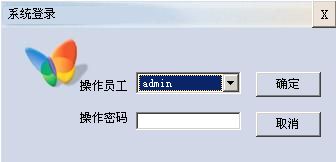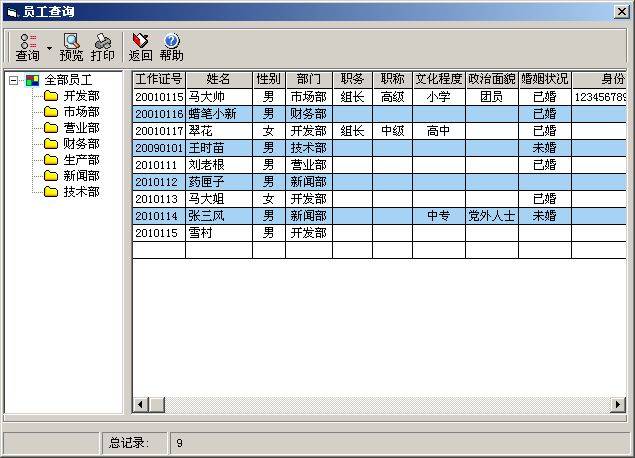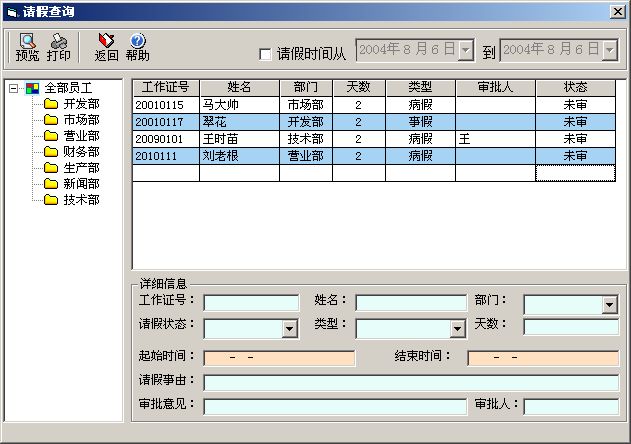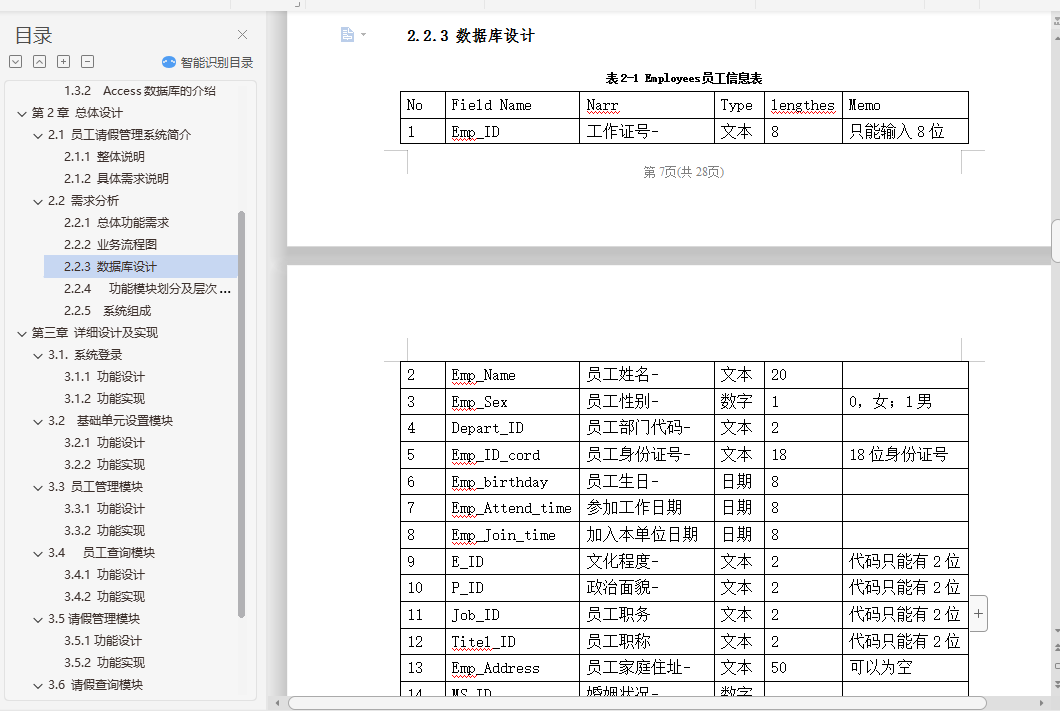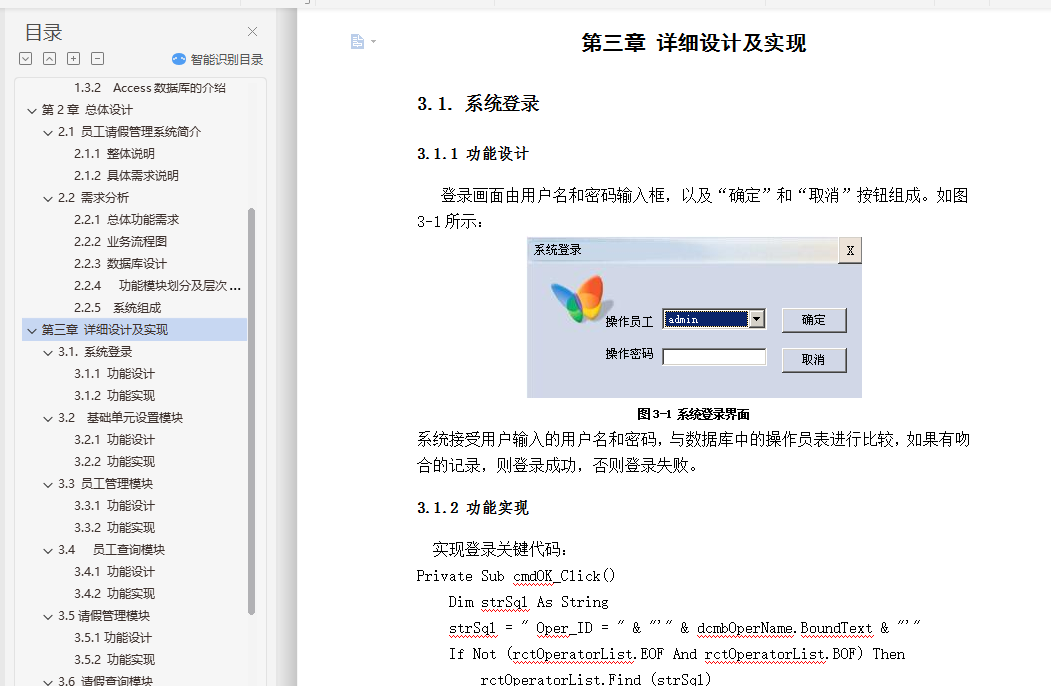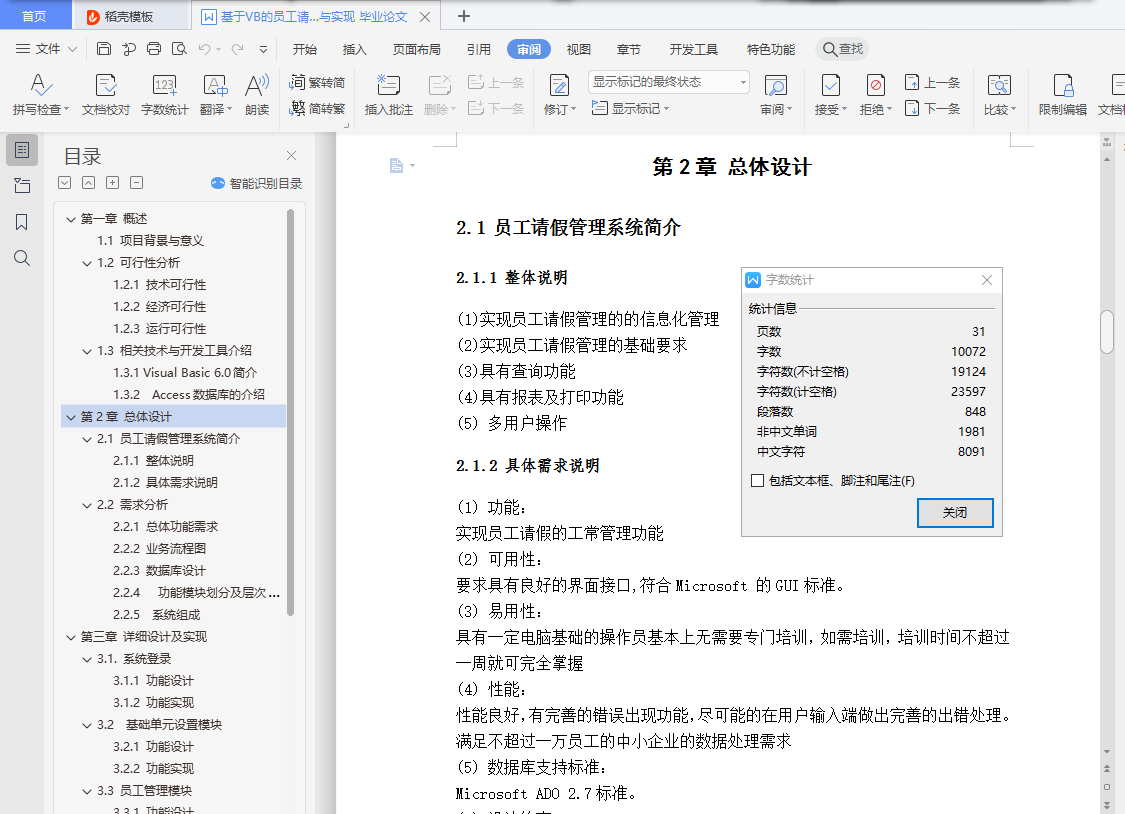摘 要
目前大部分单位的员工请假管理工作部分还是手工管理,工作效率很低,并且不能及时统计和查询员工的请假信息等,不能更好的适应当前单位管理工作的要求。手工管理还存在这许多弊端,由于不可避免的人为因素,造成数据的遗漏、误报。计算机信息化管理有着储存量大,速度快等许多优点,提供给我们的处理信息及时快捷,因此我们利用计算机提供给我们的信息员工的请假管理过程形成一整套动态的管理。
采用VisualBasic编写本系统将为以后的升级提供很大的方便。如果员工请假信息有所扩大而需要升迁至类似于SQL SEVER的大型数据库的话,VisualBasic利用其自身的升迁向导能在几乎不用更改代码的情况下就完成从小型数据库到大型数据库的迁移。
关键词:关系数据库 SQL 员工请假管理信息系统 管理信息系统 系统开发 规划
Abstract
At present, most of the unit's management staff to take leave or part of the manual management, low efficiency and timely statistics and query staff leave, and other information, can better adapt to the current management of the unit. Management manual still many shortcomings, the inevitable result of human factors, resulting in missing data, and false positives. Computer Information Management has a large storage capacity, speed and many other advantages, give us the information in a timely manner to deal with fast, so we use a computer to provide information to our employees leave the management of the process of forming a set of dynamic management.
VisualBasic used to prepare the system after the upgrade will provide a great convenience. If the information has been expanded and the need for promotion is similar to SQL SEVER a large database of words, VisualBasic its own promotion wizard can almost do not have to change the code on the database from small to large-scale migration of the database.
Key words: relational database Visual Basic 6.0 Microsoft Access SQL staff leave management information system MIS System Development Planning
目录
第一章 概述 1
1.1 项目背景与意义 1
1.2 可行性分析 1
1.2.1 技术可行性 1
1.2.2 经济可行性 2
1.2.3 运行可行性 2
1.3 相关技术与开发工具介绍 3
1.3.1 Visual Basic 6.0简介 3
1.3.2 Access数据库的介绍 5
第2章 总体设计 6
2.1 员工请假管理系统简介 6
2.1.1 整体说明 6
2.1.2 具体需求说明 6
2.2 需求分析 7
2.2.1 总体功能需求 7
2.2.2 业务流程图 7
2.2.3 数据库设计 7
2.2.4 功能模块划分及层次关系 10
2.2.5 系统组成 11
第三章 详细设计及实现 12
3.1. 系统登录 12
3.1.1 功能设计 12
3.1.2 功能实现 12
3.2 基础单元设置模块 13
3.2.1 功能设计 13
3.2.2 功能实现 14
3.3 员工管理模块 15
3.3.1 功能设计 15
3.3.2 功能实现 16
3.4 员工查询模块 18
3.4.1 功能设计 18
3.4.2 功能实现 18
3.5请假管理模块 20
3.5.1功能设计 20
3.5.2 功能实现 21
3.6 请假查询模块 23
3.6.1 功能设计 23
3.6.2 功能实现 23
结束语 25
致谢 26
参考文献 27

